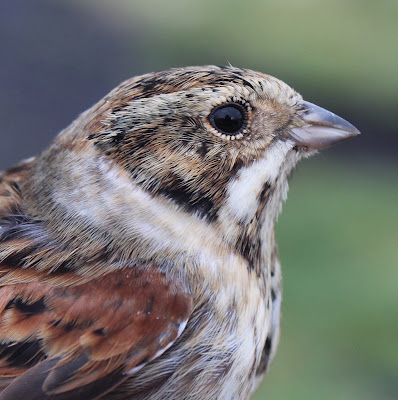Hello everyone, and this is just a short post designed to let readers know where I am should they be concerned that Another Bird Blog is defunct.
No it’s just taking a break from wet and windswept Lancashire by spending time on the lovely warm and sunny island of Fuerteventura, just 60 miles from the coast of Morocco. This picture of Fuerteventura was taken from outer space by NASA, and not by me from a Boeing 757.
Fuerteventura
Fuerteventura is the oldest Canary Island, formed about 70 million years ago as a result of volcanic activity. The geographical position of Fuerteventura means that for many tens of thousands of years sand from the Sahara has been deposited on Fuerteventura's shores, resulting in 125 miles of some of the world's best beaches. I volunteered to check out a few beaches for waders. While you don’t see too many species from a static sunbed, I managed to clock up Kentish Plover, Ringed Plover, Turnstone, Sanderling, Whimbrel, Grey Plover, Redshank, Greenshank, Bar-tailed Godwit and Curlew. Lots of Sandwich Terns buzzing along the shoreline too.
Ringed Plover
Fuerteventura
Since most of the island is semi-desert, many of the more notable bird species found here are semi-desert species such as the Houbara Bustard, Stone Curlew and Cream-coloured Courser. There is one endemic species, the Canary Island Chat, which is found in some of the gullies around the island. Hopefully I’ll see this Stonechat relative in the next few days.
Egyptian Vultures can be seen in remote parts of the island while Kestrels and Southern Grey Shrikes are very common.
Southern Grey Shrike
There seems to be plenty of Hoopoes about, sometimes in gangs of three and four, with a number of Trumpeter Finches and Lesser Short-toed Lark seen.
Hoopoe
All of the mammals found on Fuerteventura were either introduced deliberately or accidentally with the exception of bats. Of note is the Barbary Ground Squirrel, something of a tourist attraction at many of the miradors around the island, where the squirrels eat out of tourists’ hands.
Barbary Ground Squirrel
Other mammals found on the island include Barbary Hedgehogs, Rabbits, Mice and Shrews as well as feral populations of Donkeys and Goats. Look out for the goats damaging your hire car though as they attack their own refelection in a shiny, well-waxed door.
There are no snakes on the island but there are plenty of geckos and an endemic race of Atlantic Lizard. It is possible that some Turtles still breed here on some of the more remote beaches and several species of Turtles are seen regularly in the waters around the island.
Fuerteventura
Back in a day or two, in the meantime keep logging in to see how Another Bird Blog survives the heat of the midday sun.
For all regular readers, please continue to post comments and I'll reply asap. I've asked the house-sitter to just log in and publish comments without trying to update the blog in any other way, so fingers crossed nothing goes awry.
For all regular readers, please continue to post comments and I'll reply asap. I've asked the house-sitter to just log in and publish comments without trying to update the blog in any other way, so fingers crossed nothing goes awry.





.jpg)
























































.jpg)











